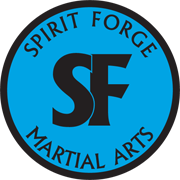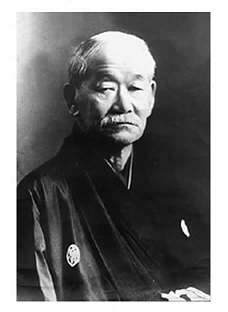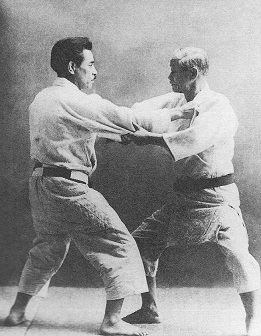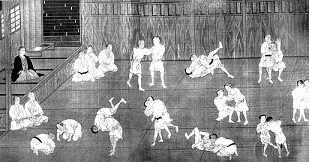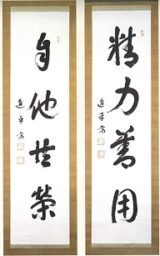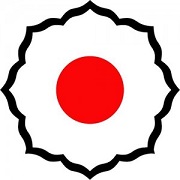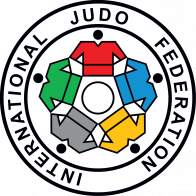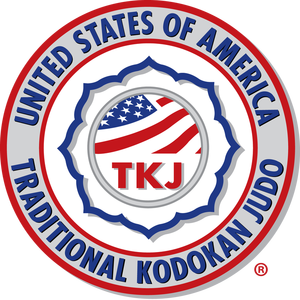Judo, literally, “the gentle way,”; or, “the way of yielding,” is a Japanese martial art founded by Dr. Jigaro Kano in 1882, primarily by integrating techniques practiced by two schools of classical Jui Jitsu: Tenjin Shinyo ryu and Kito ryu.
The various schools of Jui–Jitsu practiced in nineteenth century Japan were rooted in a martial tradition hundreds of years old. Schools differed in both emphasis and strategy, some focused on Nage waza, throwing techniques, others on Katame waza, ground techniques, still others on Atemi waza, striking techniques. Strategy varied from seizing the initiative with an immediate attack, an approach favored by Japanese swordsmanship; to harmonizing with an opponent’s attack, and by doing so, rendering it harmless.
Dr. Kano was an undersized, sickly child who began his study of Tenjin Shinyo ryu Jui-Jitsu at the age of eighteen in an effort to improve his health under Fukuda Hachinosuke. Tenjin Shinyo ryu Jui-Jitsu assigned importance to achieving harmony with an opponent’s attack, yet also included grappling and striking techniques. Dr. Kano later studied Kito ryu Jui-Jitsu under Tsunetoshi Iikubo, which placed a strong emphasis on throwing techniques. During this time, Dr. Kano also undertook a systematic study of other schools of Jui-Jitsu, notably Sekiguchi ryu and Sigo ryu, in addition to Sumo, western wrestling, boxing and works such as the I Ching, the Chinese Book of Changes, and the Taoism of Lao Tsze.
At the age of twenty-two, Dr. Kano integrated grappling and striking techniques gleaned from Tenjin Shinyo ryu, throwing techniques from Kito ryu, and the results of his broad martial arts studies into a new comprehensive martial art: Judo. In the course of doing so, he removed dangerous, often crippling techniques to enable full contact, full speed randori, free practice, sparring without fear of serious injury. Dr. Kano’s martial art stands upon two fundamental concepts: Seiryoku Zenyo, and Jita Kyoei.
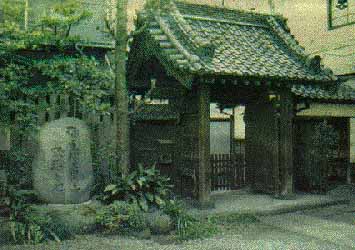
The former is defined as, “maximum efficiency with minimal effort,” which enables a slight individual to overcome a much larger opponent; the latter is translated as, “mutual benefit,” a moral precept in which respect, trust, and mutual consideration are inculcated by Judo practice and carried into the world at large. Dr. Kano established his first school, the Kodokan (the hall for studying the way) in the Eishoji Buddhist Temple in Tokyo, Japan. The first Kodokan had only nine students training on twelve tatami mats measuring twelve by eighteen feet; today the Kodokan has over five hundred tatami and more than a million visitors annually.
As it was originally conceived by Dr. Kano, Judo is a comprehensive discipline consisting of throws, grappling techniques, strikes, formal exercise or kata, and sparring, randori. The latter evolved into a competitive sport that is practiced around the world and has been included in the Olympic Games since 1964. The Judo curriculum at Spirit Forge Martial Arts includes both traditional elements and training for competition.
He who fears loss has already been beaten.
— Dr. Jigaro Kano
Nara karobi ya oki – Seven times down, eight times up
